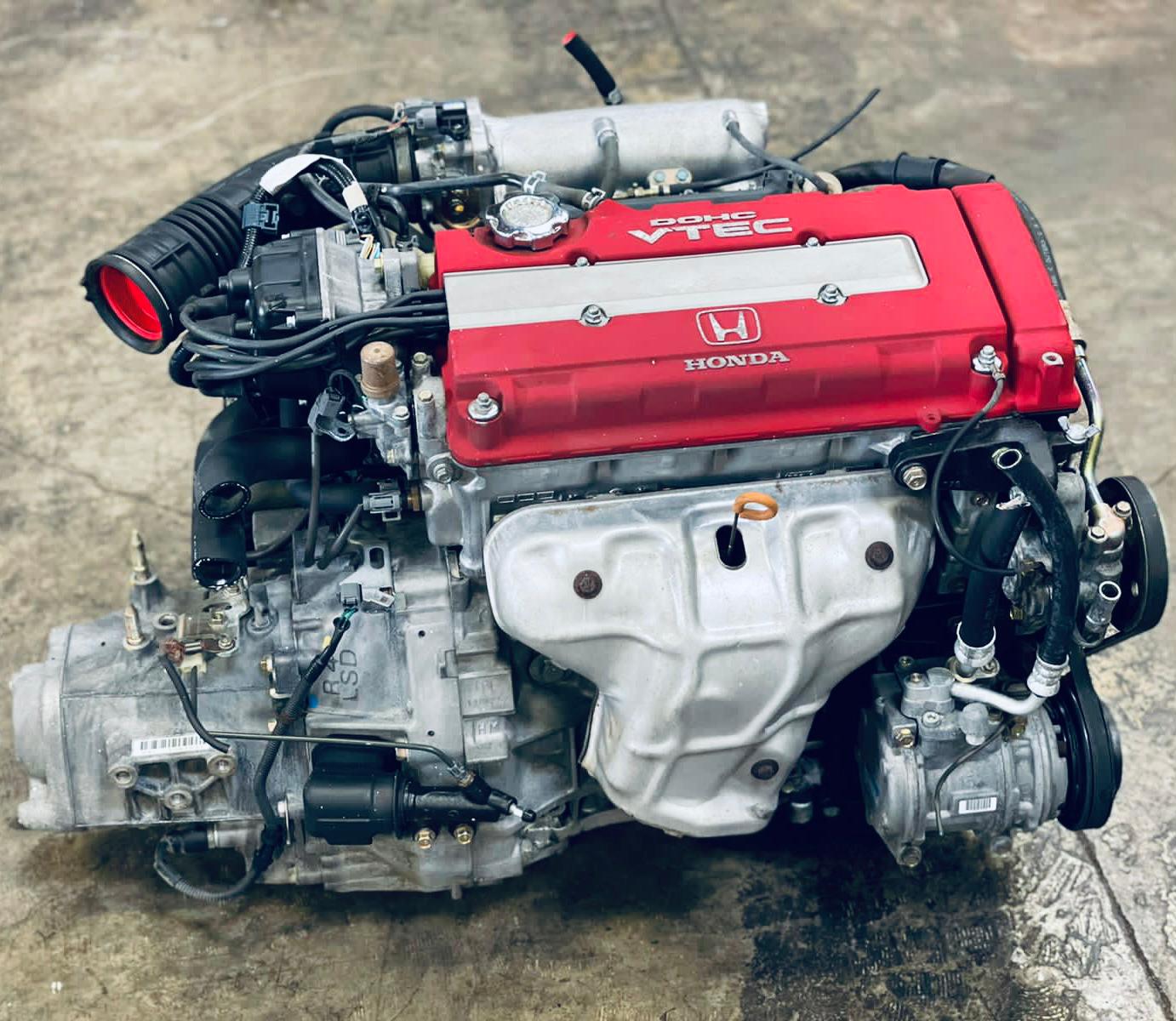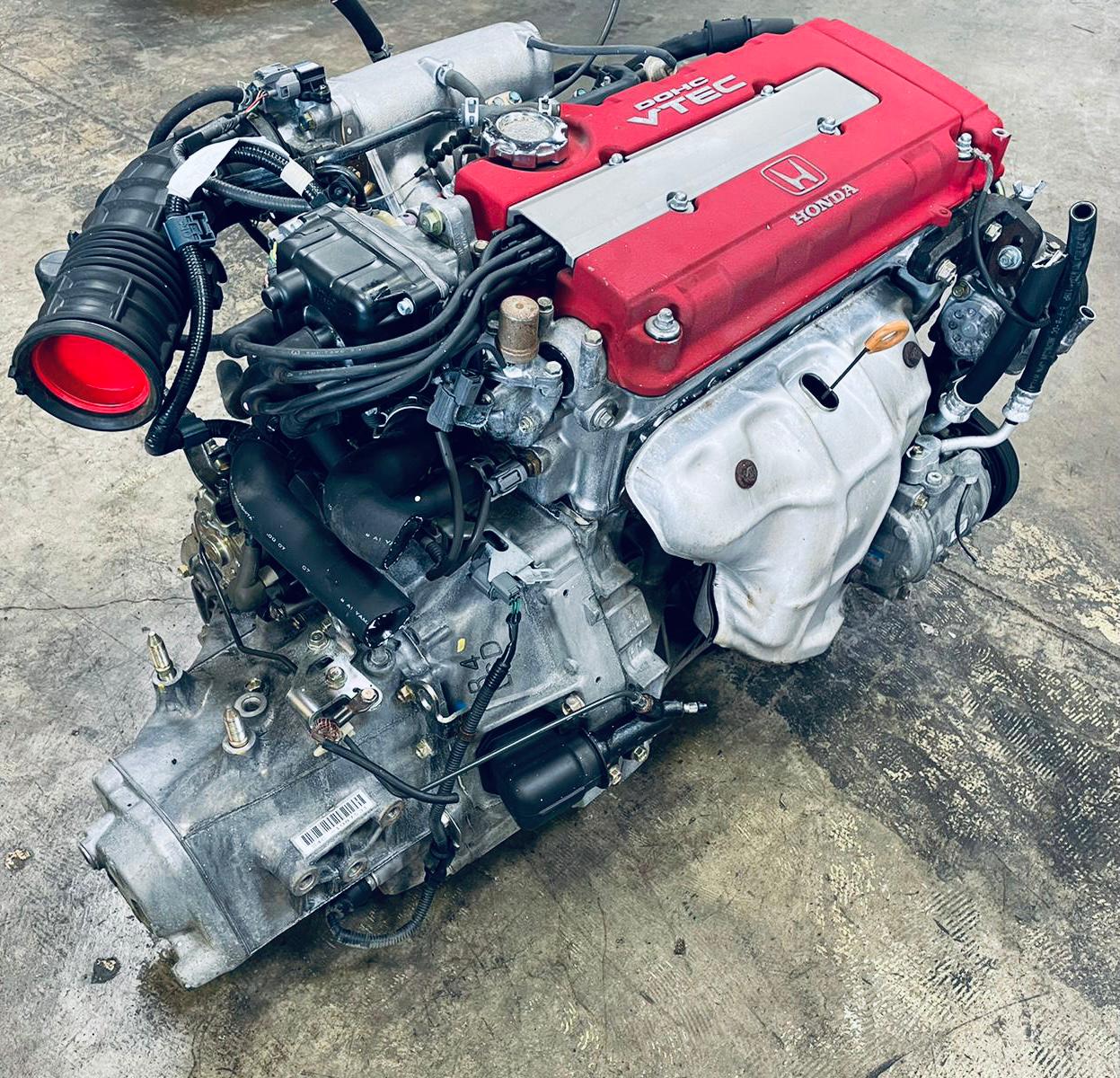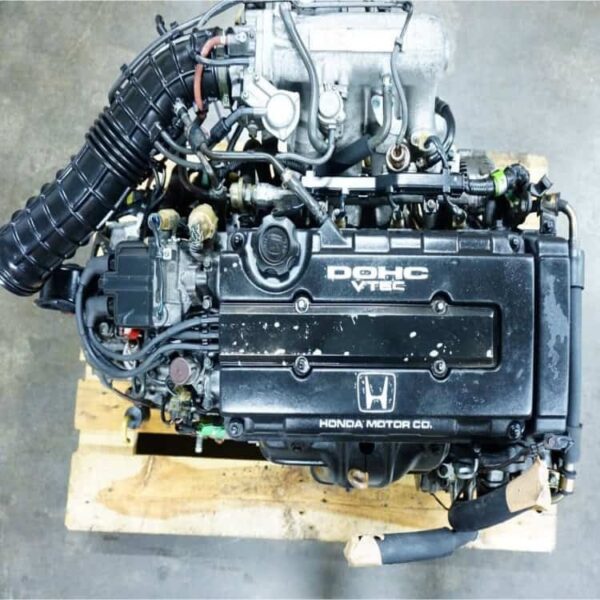Your cart is currently empty!
Honda Civic Type R EK9 Engine
Model 1997–2000 JDM Civic Type R EK9 JDM Displacement: 1,595 cc (97.3 cu in) Compression: 10.8:1 Bore: 81 mm (3.2 in) Stroke: 77.4 mm (3.0 in) Rod/Stroke ratio: 1.84:1 Rod Length: 142.42 mm (5.6 in) Power: 185 hp (138 kW) @ 8200 rpm & 118 lb·ft (160 N·m) @ 7500 rpm Redline: 8500 rpm Rev-limit: 9000 rpm Transmission: S4C With Helical LSD (4.4 final drive, dual-synchromesh on 2nd, 3rd…
Honda Civic Type R EK9 Engine
In 1979, Honda returned to Grand Prix motorcycle racing after more than a decade in the sporting wilderness. A Formula 2 engine supply deal followed in 1980 and Honda-powered Ralts went on to win the F2 championship in 1981, 1982 and 1984.
In 1983, Honda moved up to Formula 1. Collaborations with Williams, Lotus and McLaren ultimately yielded 69 victories, five Driver titles and six Constructor championships.
Having initially quit as an F1 constructor back in 1968, Honda’s second coming proved a remarkable success.
To complement the standard NSX, which had been conceived as a practical and comfortable mid-range supercar, Honda launched a hard-edged high performance derivative in 1992. The resultant NSX Type R featured uprated suspension, a blueprinted engine, special gearbox ratios and a conspicuous lack of luxury equipment to reduce weight.
In 1995, the Type R treatment was applied to the Integra DC2 which was similarly met with critical acclaim.
The Integra was an upmarket version of the Civic, Honda’s best-selling four-wheel product.
Within two years of the Integra Type R’s arrival, an uprated high performance Civic was introduced.
By this time, the Civic was in sixth generation guise. The model had been introduced back in 1972 and proved a breakthrough offering for Honda. Importantly, it was the firm’s first model to sell in any great numbers outside of Japan.








